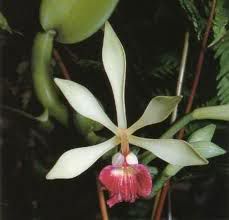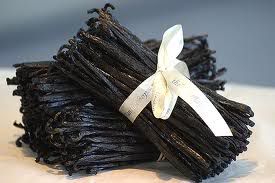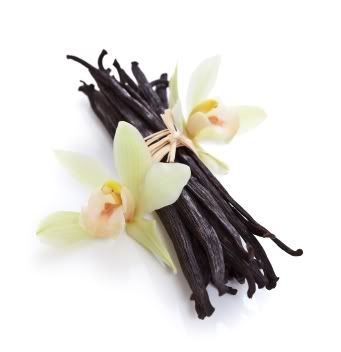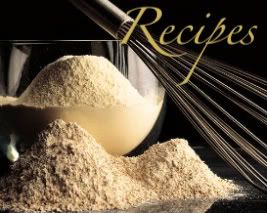As a flavouring, vanilla adds potency and aroma to both sweet and savoury dishes. Liquid extract is the most common form of vanilla used, but the seeds and pod are also employed.
Pure vanilla extract: Extract is made by macerating chopped pods in an alcohol-and-water solution to draw out the flavour. The mixture is aged for several months until the liquid is brown, clear, and very fragrant. The strength of the extract is measured in units called folds. Single-fold vanilla is sold for the home cook. Two-, three-, and four-fold vanilla is sold for food processing purposes.
Single-fold vanilla contains the extractive matter of 378grams (13.35 ounces) of vanilla beans, containing less than 25 percent moisture in 3.8 litres (1 gallon) of 35 percent aqueous ethyl alcohol. Two-fold uses 756 grams (26.7 ounces) of vanilla beans, contains two times as much extractive matter, and is twice as strong. Three- and four-fold are, as one would imagine, three and four times as strong. Vanilla extract will keep indefinitely if stored, airtight, in a cool, dark spot.
Vanilla essence is also produced and is so strong that only a drop or two is necessary to adequately flavour a mix.
To retain the intensity of flavour, vanilla extract should be cooked in mixtures after they have cooled slightly. When baking, vanilla should be mixed in with the fat, which will encapsulate it and prevent it from volatilizing during the hot baking process.
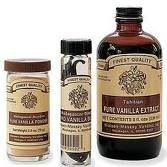
Whole vanilla beans: Whole beans are frequently used in the pastry kitchen. To use the internal seeds only, the pod is split open lengthwise down the centre, and the thousands of tiny seeds are scraped out. The seeds are added to a mix, often ice cream or custards, to infuse it with a rich vanilla flavour. In cookies, cakes, or other doughs, they may be creamed into the butter. The pod itself may also be added to heighten the flavour of mixtures that are simmered, but it will be removed at some point before serving. Split pods, either with or without the seeds, can be placed in granulated or confectioners' sugar to create a beautifully scented vanilla sugar. Whole beans that have been used as a flavouring for cooked mixtures may also be removed, rinsed clean, dried, and stored, tightly wrapped in an airtight container, in a cool, dark spot. Under these conditions, they will stay fragrant for a bout six months.
Imitation vanilla: Composed entirely of artificial flavourings, (most of which are paper industry-by-products that have been chemically treated), imitation vanilla has a harsh taste that will often leave a bitterness on the palate. Much cheaper than vanilla extract, it is not comparable to the real thing and much more will be needed to add flavour to a mix. It may also be called artificial vanillin.
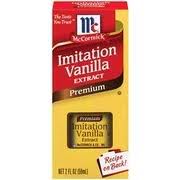
Vanilla flavouring: a blend of pure and imitation vanilla used primarily for commercial products.
Vanilla sugar: Either confectioner's or granulated sugar that has been flavoured by being stored, airtight, with a vanilla bean. Two beans are generally used to flavour 1 pound of sugar; the beans may be those that have been scraped off their seeds. The aromatic sugar is used to flavour baked products, ice creams, pudding, or other desserts.
Vanilla powder: Vanilla powder is pure vanilla extract that has been dried on maltodextrin ( a modified, all-natural cornstarch), with sugar added or not. It is used as a topping, for colour, or flavouring liquid-sensitive products.
Vanilla paste: With a consistency somewhere between syrup and molasses, vanilla paste is formulated to match pure extract in flavour, strength, and usage. Its consistency holds hundreds of vanilla seeds in suspension which gives the finished product a natural vanilla look.
This article completes our topic on vanilla. Hope you have a clearer understanding of one of the most frequently used flavourings.


